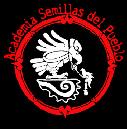Natural History, Dec 1999 v108 i10 p54
AZ-TECH MEDICINE. (manuscript details Aztec medicinal practice) ROB NICHOLSON.
Full Text: COPYRIGHT 1999 American Museum of Natural History
The History of Medicine in Mexico:
The People's Demand for Better Health, an 860-square-foot fresco by
the
great Diego Rivera, adorns a dim, quiet lobby in the Centro Medico La
Raza, a complex of modern hospitals in
the heart of Mexico City. Doctors pass it without a glance, even though
their heritage is spread before them in an
explosion of emotion, color, and form. On the left side of the painting,
Rivera depicted the health-care technology
of the 1950s--transfusions, vaccinations, X rays, hospital births, and
radiation therapy. To the right he showed the
practices of the Aztecs, Mexico City's pre-Columbian inhabitants. A
worried noble points at his heart while a
stern curandero hands him an infusion from the bloom of yolloxochitl,
a member of the magnolia family. A midwife
and her team bring forth an infant; other healers administer massage,
herbal poultices, dental care, medicinal
steambaths, and enemas. Trepanation, a primitive cranial operation used
by the Aztecs, is also illustrated, attesting
both to Rivera's scholarship and to the use of analgesics (could any
patient have borne the excruciating pain
without them?).
At the center of the mural, faithfully
copying an image from the early-sixteenth-century Codex Borbonicus,
Rivera
painted the Aztec goddess Tlalzolteotl, who was connected with cleansing
and fertility. Below her the artist paid
homage to another codex (manuscript book), the Badianus Manuscript,
by reproducing the majority of its
illustrations. Created in 1552, this repository of traditional medicinal
knowledge is the legacy of an Aztec artist
who labored at a Catholic mission that is now a mere two subway stops
from the Centro Medico. Two other
compendiums of Aztecana that include medical lore survive from about
the same period, one compiled by
historian and missionary Bernardino de Sahagun and the other by court
physician Fernando Hernandez. These
two texts cover a greater number of plant species than the Badianus
does, and in the case of Hernandez's work,
one could say that the ink drawings are more accurate botanically. But
of the three, the Badianus is the oldest,
and its renderings are essentially the earliest surviving illustrations
of New World plants. Having seen the amazing
floral wealth of Mexico on numerous collecting expeditions, I favor
the Badianus Manuscript for the kick I get out
of recognizing species of plants I have come upon during fieldwork and
for the visual joy I derive from the utterly
flamboyant colors--as bright as a Mexican cottage garden in full sun.
From 1519 through the 1520s, the
Spanish conquistadores and the priests and administrators who followed
them
did their best to tear down the Aztec monarchy and impose Christianity.
In the process, much of Aztec
heritage--the accumulated wisdom as well as the artifacts and architecture--was
lost or destroyed, including most
Aztec works on bark paper. Almost immediately, however, efforts got
under way to salvage and record
traditional knowledge, including indigenous medications. In 1545, for
example, Spanish physician Nicolas
Monardes published an (unillustrated) account of botanical cures, a
version of which was also translated into
English under the title Ioyfull Newes out of the Newe Founde Worlde,
Wherein Is Declared the Rare and
Singuler Vertues of Diuerse and Sundrie Hearbes, Trees, Oyles, Plantes,
and Stones, with Their Applications, as
Well for Phisicke as Chirurgerie. Plants such as sassafras, tobacco,
coca, and "holie woodde" were touted as
potent new remedies (the last refers to species of Guaiacum, or lignum
vitae, used to treat venereal disease).
At what had been the great marketplace
of Tenochtitian (the Aztec capital that became Mexico City), the
Franciscan order erected a church and convent known as Santiago de Tlaltelolco.
There, in 1536, Viceroy
Antonio de Mendoza established the College of Santa Cruz, one of the
first European-style schools of higher
learning for indigenous peoples in the New World. At Santa Cruz, sons
of the Aztec nobility were taught to read
and write Spanish, Latin, and (using the Western alphabet) Nahuafl,
their own language. Other courses were
arithmetic, philosophy, and music.
The school also enlisted renowned
Aztec healers to teach their medicinal arts. One of these Indians, who
was
given the Christian name Martinus de la Cruz, rose to the position of
Physician of the College. It was he who
made the actual compilation of plant descriptions and medicinal uses
that is now known as the Badianus
Manuscript, but the name that has become attached to it is that of his
colleague Juannes Badianus, an Indian
instructor of Latin, who rendered the text in that language. No artist
was given credit for the colorful illustrations.
Scholars theorize that de la Cruz himself painted and labeled each plate
and wrote his descriptions in Nahuatl on
separate sheets of paper, and that Badianus then did his translations
and added them to the illustrations.
The herbal, prepared at the request
of the viceroy's son, Francisco de Mendoza, was intended as a gift to
Charles
I, king of Spain. The first page begins, "A little book of Indian
medicinal herbs composed by a certain Indian,
physician of the College of Santa Cruz, who has no theoretical learning,
but is well taught by experience alone. In
the year of our Lord Saviour 1552." The medical manual crossed
the sea safely, but there is no record that it ever
came into the king's hands. A number of librarian's marks were added
inside the cover over the centuries, and the
words "Ex Libris Didaci Cortavila," scrawled on the frontispiece,
indicate that it once belonged to that Spanish
apothecary. Eventually it reached Cardinal Francesco Barberini (1597-1679),
librarian of the Vatican and
cofounder of the renowned Barberini Library in Rome. In 1902 the Barberini
Library was absorbed into the
Vatican's holdings, and a mere twenty-seven years later the manuscript
was brought to light by American historian
Charles Clark. Knowledge of the Aztec healers finally reached the world
at large in 1940, when a facsimile
edition of the Badianus appeared, translated into English and annotated
by Emily Walcott Emmart. A reprint
edition, An Aztec Herbal: The Classic Codex of 1552, is to be issued
shortly by Dover Press.
The book's thirteen chapters deal
with close to hundred afflictions, beginning with those of the scalp
and head and
working downward. Leprosy, heart pain, venereal diseases, and "tubercles
of the breast" are considered along
with more mundane ailments such as "fetid breath," "odor
of the armpits," and "rumbling of the abdomen." The
final chapter is ominously titled "Of Certain Signs of One Who
Is Going to Die."
The medications are drawn from
animal, vegetable, and mineral sources, many of which seem preposterous
by
today's standards, such as calcareous kidney stones and the charred
excrement of various birds and animals.
(Keep in mind, however, that Premarin, a currently popular estrogen-replacement
medication, is derived from the
urine of pregnant mares.) The Badianus prescriptions commonly are for
combinations of materials, mostly of
botanical origin, such as barks, flowers, roots, and woods. The potions
pose a puzzle for modern
pharmacological researchers, who hope to tease out of each complex stew
the one molecule that may be the main
active ingredient.
Many of the plants that have been
identified are powerhouse producers of efficacious medicinal compounds.
Argemone grandiflora, a close relative of the painkilling opium poppy,
was known to the Aztecs as chicalote, an
analgesic for reducing pain in the groin. Two plates depict Dioscorea
(the genus to which true yams belong), some
species of which contain powerful steroidal sapogenins. In the 1940s
one Mexican species brought a fortune to
chemists who discovered how to synthesize the human hormones progesterone
(used in oral contraceptives) and
testosterone from chemicals held in the plant's tuberous root system.
Conspicuously absent from the volume
are most of the hallucinogenic plants found in the other Aztec herbals,
such
as the sacred cactus peyotl and the mushroom teonanacatl. Perhaps the
friars overseeing the project considered it
unseemly to recommend these to the court of Spain. The self-deprecating
tone of the introduction similarly
suggests caution: "Would that we Indians could make a book worthy
in the King's sight, for this is certainly most
unworthy to come before the sight of such great majesty. But you will
recollect that we poor unhappy Indians are
inferior to all mortals, and for that reason our poverty and insignificance
implanted in us by nature merit your
indulgence."
The illustrations are for the most
part simple and stylized, far from the photo-realist botanical renderings
we've
become accustomed to. They don't compare in accuracy with the woodcuts
in European herbals produced at
about the same time or with the botanical representations of such great
Renaissance artists as Albrecht Durer.
Nevertheless, some plants are instantly recognizable. A favorite of
mine is the depiction of huacalxochitl,
identifiable to any botanist as a member of the arum family, which includes
jack-in-the-pulpit. The flower shows
all the classic features: a white columnar spadix surrounded by a hooded
spathe, green outside and aflame with
red inside.
Other illustrations are more problematic.
In one plate, we note a plant that belongs to the potato family. The
leaves have a jagged edge, the flowers are white trumpets, the fruits
are large and fleshy. But the artist, like many
herbalists of the time, depicts the plant as a tree---on a questionable
scale--with its flowers and fruit occurring
simultaneously. These liberties tantalize. Is the plant a thorn apple
(Datura), correctly shown with upturned flowers
but incorrectly shown with smooth rather than thorny fruit? Or is it
a freely drawn angel's-trumpet (Brugmansia), a
South American native that may well have been traded in pre-Columbian
times? Other South American plants,
such as Theobroma cacao, the source of chocolate, were well established
in Mexico prior to the Spanish
conquest. In addition, plants such as vanilla and Bourreria, native
to coastal regions, and fir, native to the highest
mountains, are also portrayed--additional evidence that botanical goods
were collected and transported
throughout the Aztec realm.
The identities of many plants in
the Badianus Manuscript have yet to be deciphered, and nonochton is
one of
them. Offered for relief of pain or heat in the heart, it is part of
a prescription whose ingredients also include gold,
amber, turquoise, red coral, ocher, and the burned heart of a stag.
Its name means "little nopals that come out of
anthills," and the painting also shows red ants working among the
tuberous roots--suggesting a plant--insect
symbiosis or at least a shared preference for a particular soil. Despite
the description, it does not resemble nopal,
or Nopalea cactus. Portulaca, a succulent Mexican annual, has been suggested
as a possibility; my own guess
might be Pereskiopsis, a tree in the cactus family that has succulent
oval leaves on thorny stems.
According to Spanish priest and
historian Juan de Torquemada (1557?-1664), who drew on earlier accounts
of
the conquest, "Montezuma kept a garden of medicinal herbs, and
the court physicians experimented with them
and attended the nobility." The large aristocracy and extensive
botanical gardens, a legacy of the Aztecs' own
expansionism, helped contribute to one of the most detailed and profusely
illustrated chapters of the Badianus
Manuscript: "Trees and Flowers for the Fatigue of Those Administering
the Government and Holding Public
Office." The text promises that "indeed, these medicaments
bestow the bodily strength of a gladiator, drive
weariness far away, and finally, drive out fear and fortify the human
heart." Whether the Badianus Manuscript was
ever found "worthy in the King's sight" we shall probably
never know, but perhaps modern government officials
will be moved to bestow more funding on botanical gardens that promise
to research the plants discussed in this
chapter.
A sort of botanical time capsule,
this little book transports us back into the realm of Aztec knowledge
and yet is
also rich enough to inspire physicians, pharmacists, artists, and botanists
into the new millennium. And the
Badianus Manuscript is a worthy legacy for all who seek to heal, a common
thread wherever humans toil.
Rob Nicholson ("Az-Tech Medicine")
first learned of the 1552 Badianus Manuscript and its colorful illustrations
while taking a course with renowned Harvard ethnobotanist Richard Schultes.
Currently interim administrative
director of the Botanic Garden of Smith College in Northampton, Massachusetts,
Nicholson has been part of a
team studying photoecdysones in primitive gymnosperms (these compounds
help deter insects from feeding on the
plants). In addition, he is writing on botanical aspects of the paintings
of Frederic Church, a member of the
nineteenth-century Hudson River school, who also spent time in Colombia
and Ecuador. Nicholson's
plant-collecting expeditions have taken him around the world in search
of specimens for use in medical research,
conservation biology, and ornamental horticulture. He has traveled to
Mexico, Canada, Chile, Vietnam,
Colombia, Ecuador, Morocco, Algeria, the Philippines, and South Korea,
as well as around the United States.
Not a bad life, says he.
War Club - Riotstage


Hear more War Cub music @
Mexica Uprising MySpace
Add Mexica Uprising to your
friends list to get updates, news,
enter contests, and get free revolutionary contraband.
Featured Link:
"If Brown (vs. Board of Education) was just about letting Black people into a White school, well we don’t care about that anymore. We don’t necessarily want to go to White schools. What we want to do is teach ourselves, teach our children the way we have of teaching. We don’t want to drink from a White water fountain...We don’t need a White water fountain. So the whole issue of segregation and the whole issue of the Civil Rights Movement is all within the box of White culture and White supremacy. We should not still be fighting for what they have. We are not interested in what they have because we have so much more and because the world is so much larger. And ultimately the White way, the American way, the neo liberal, capitalist way of life will eventually lead to our own destruction. And so it isn’t about an argument of joining neo liberalism, it’s about us being able, as human beings, to surpass the barrier."
- Marcos Aguilar (Principal, Academia Semillas del Pueblo)
![]()
Grow
a Mexica Garden
12/31/06
The
Aztecs: Their History,
Manners, and Customs by:
Lucien Biart
12/29/06
6 New Music Videos
Including
Dead Prez, Quinto Sol,
and Warclub
12/29/06
Kalpulli
"Mixcoatl" mp3 album
download Now Available
for Purchase
9/12/06
Che/Marcos/Zapata
T-shirt
Now Available for Purchase
7/31/06
M-1
"Til We Get There"
Music Video
7/31/06
Native
Guns "Champion"
Live Video
7/31/06
Sub-Comandante
Marcos
T-shirt Now Available for Purchase
7/26/06
11 New Music Videos Including
Dead Prez, Native Guns,
El Vuh, and Olmeca
7/10/06
Howard Zinn's
A People's
History of the United States
7/02/06
The
Tamil Tigers
7/02/06
The Sandinista
Revolution
6/26/06
The Cuban
Revolution
6/26/06
Che Guevara/Emiliano
Zapata
T-shirts Now in Stock
6/25/06
Free Online Books
4/01/06
"Decolonize"
and "Sub-verses"
from Aztlan Underground
Now Available for Purchase
4/01/06
Zapatista
"Ya Basta" T-shirt
Now Available for Purchase
3/19/06
An
Analytical Dictionary
of Nahuatl by Frances
Kartutten Download
3/19/06
Tattoo
Designs
2/8/06


